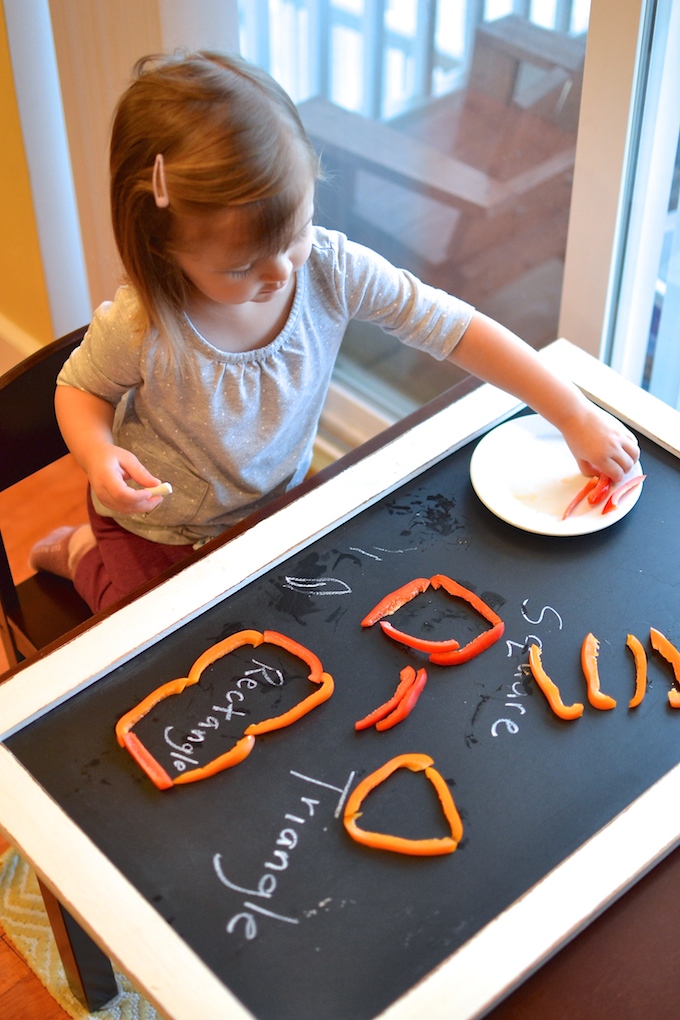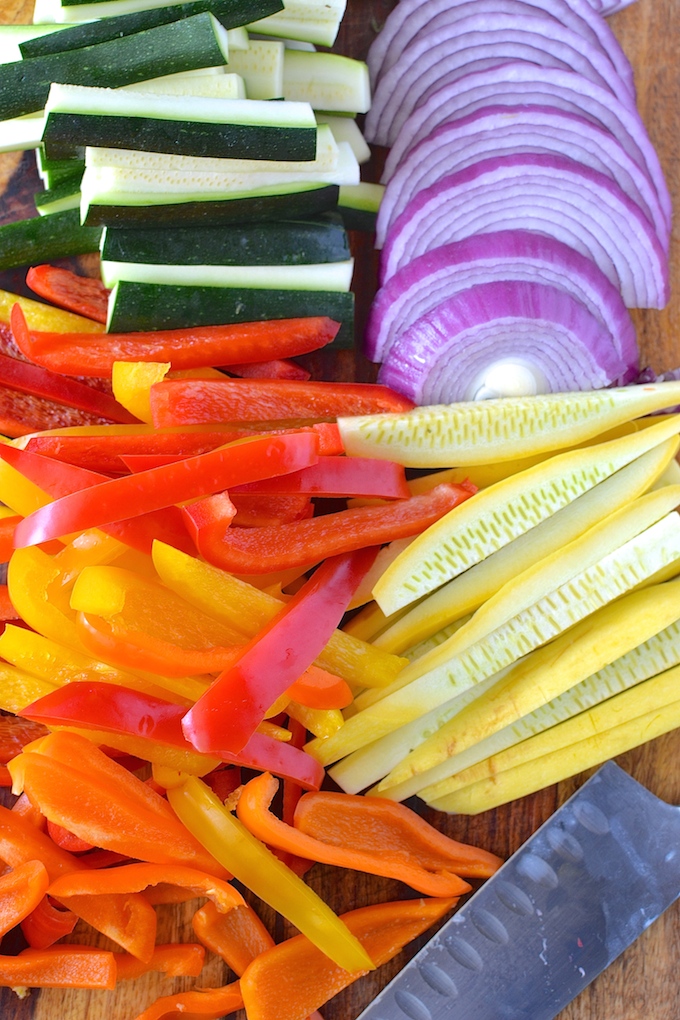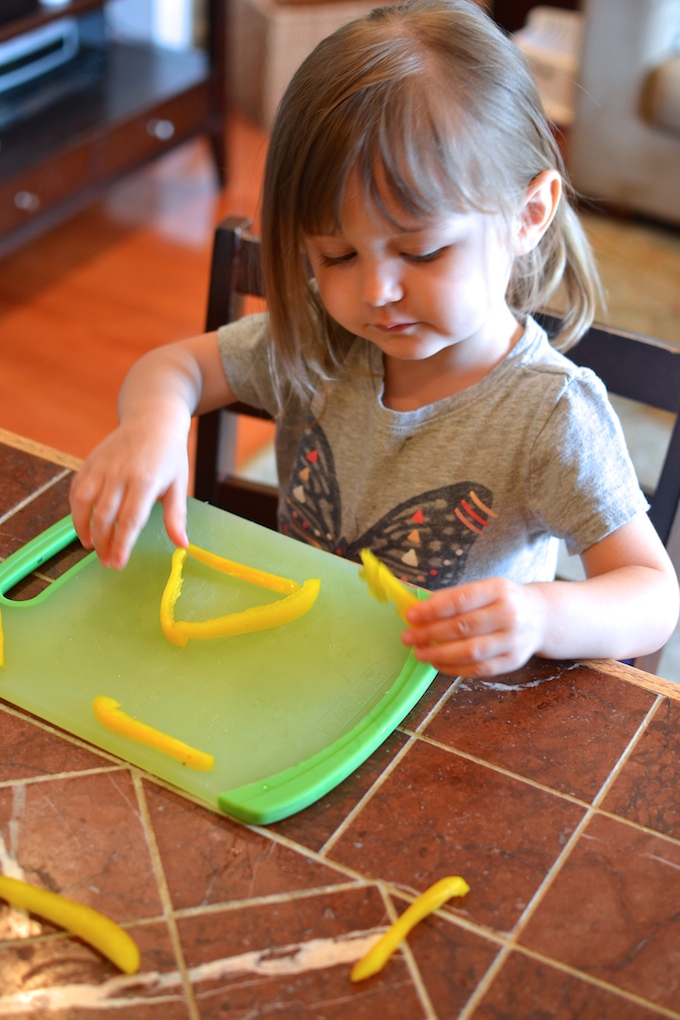
Sliced vegetables = a geometry lesson? You betcha! Using the loads of colorful, sliced peppers, zucchini, squash and onions from our Quick Veggie Fajitas recipe, we’re building basic shapes and learning all about the sides and angles in different polygons.
“Polygon” is a Greek word, “poly-” meaning “many” and “-gon” meaning “angles. Polygons are two-dimensional, closed shapes made up of straight lines.

As you slice your peppers, zucchini, red onion and yellow squash into thin strips for your fajitas, set some aside for your child to use for this activity. Using the vegetable strips, show your child how to build basic polygons. As you build, talk about each shape. What is this shape called? How many sides does it have?
The most common, basic polygons are:
- Triangle – 3 sides
- Quadrilateral – a square has 4 equal sides. A rectangle also has 4 sides, but two sides are short and two sides are longer
- Pentagon – 5 sides
- Hexagon – 6 sides (I always teach kids to remember that a hexagon has six sides: both words have the letter x!)
- Octagon – 8 sides (What common street sign is shaped like an octagon?)

For younger children, start with a triangle and then challenge your child to add another side to the shape. What new shape did you build? See how many different shapes your child can build. Remember, wherever your child takes this activity is what’s right for them at that time.
For older children, or if your younger child seems ready to learn more, consider these extensions:
- When all the sides of a shape are equal, the shape is called a “regular” polygon. Can you make a regular quadrilateral? Can you make an irregular pentagon?
- Identify the different colors of your vegetables and challenge your child to make a RED square or a GREEN triangle. Can you use two colors to make a hexagon?
- How are the slices of onion different? (They’re curved!) What shape can you make with your sliced onion? Perhaps a circle? Is a circle a polygon? (No, because the sides are not straight!)
- What is an angle? If your child doesn’t know, show them! How many angles does each shape have? Each polygon has the same number of angles as it does sides. For example, a triangle has 3 sides and 3 angles.

For more information about basic polygons, check out Math is Fun or BrainPOP!
Disclaimer: As with all of our activities, my suggestions for how kids can get involved are based on what has worked in our home. Your child may be able to do more or less based on their age and/or ability. As always, make sure you are properly supervising and engaging with kids that are participating in learning activities.
 Carol says
Carol says
May 1, 2016 at 10:04 AMGreat math lesson! I love the idea of introducing angles into the discussion. Great tips, Sally!
 Sally says
Sally says
May 1, 2016 at 8:33 PMThank you, Carol!
 Linda Toonen says
Linda Toonen says
May 1, 2016 at 10:47 AMSally, your ideas are awesome!
 Sally says
Sally says
May 1, 2016 at 8:33 PMThanks, Linda!
 Petra says
Petra says
May 1, 2016 at 4:02 PMThank you very much for all these great ideas how to teach our children even if we are busy in the kitchen cooking. Great tips how to do it all at ones.
 Sally says
Sally says
May 1, 2016 at 8:32 PMThank you so much, Petra!